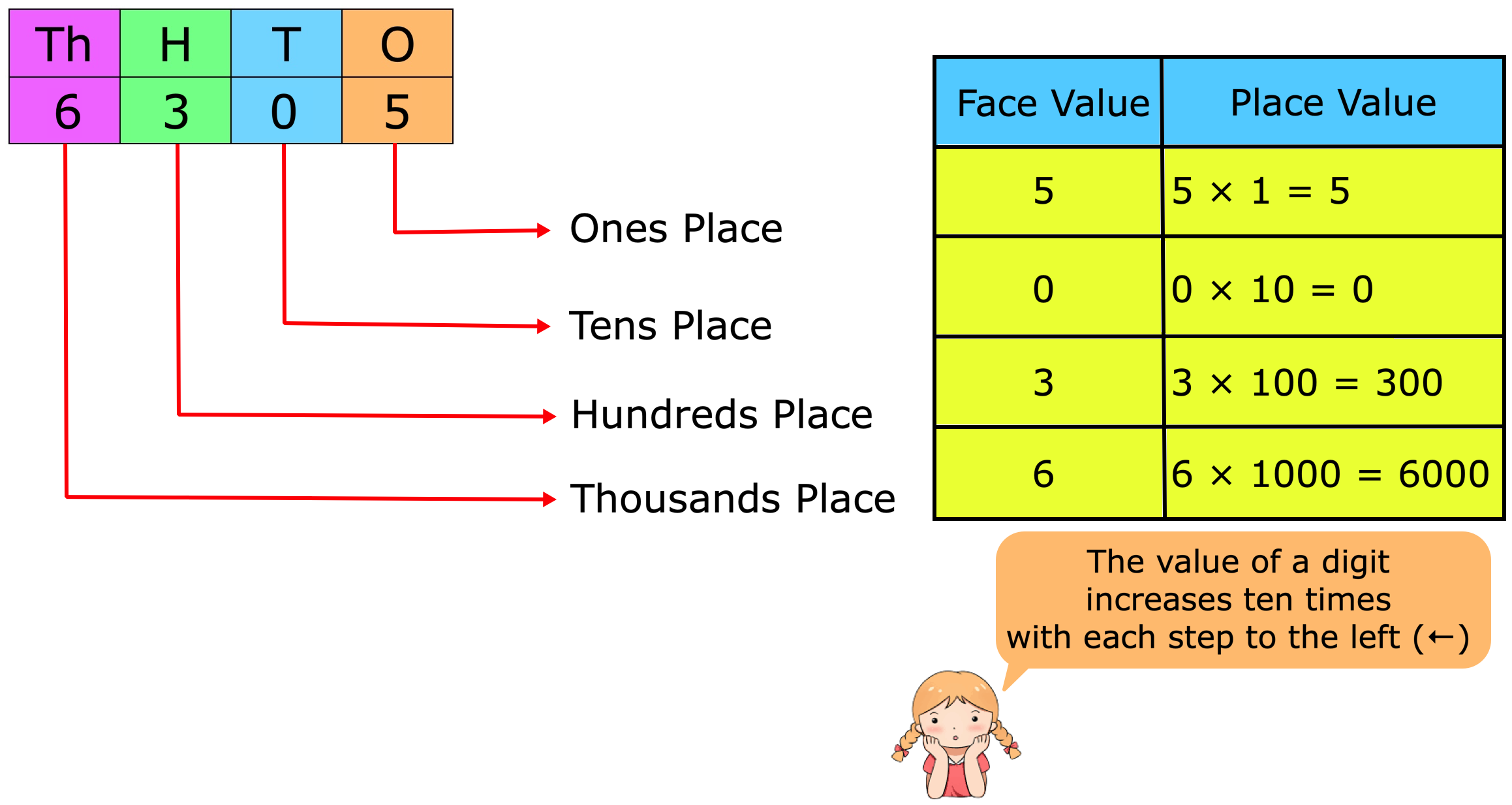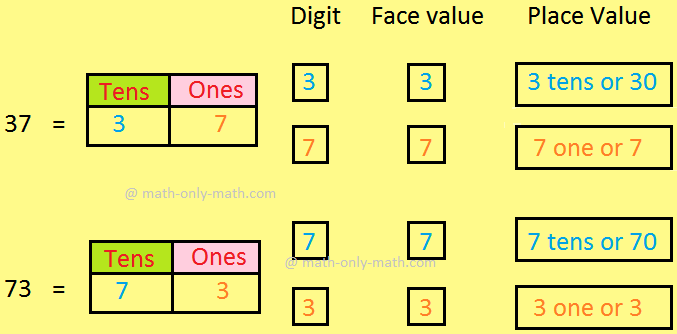Problems on Hyperbola
We will learn how to solve different types of problems on hyperbola.
1. Find the position of the point (6, - 5) relative to the hyperbola x29 - y225 = 1.
Solution:
The given equation is of the hyperbola is x29 - y225 = 1
We know that the point P (x1, y1) lies outside, on or inside the hyperbola x2a2 - y2b2 = 1 according as x21a2 - y21b2 - 1 < 0, = or > 0.
According to the given problem,
x21a2 - y21b2 – 1
= 629 - (−5)225 - 1
= 269 - 2525 - 1
= 4 - 1 - 1
= 2 > 0.
Therefore, the point (6, - 5) lies inside the hyperbola x29 - y225 = 1
2. The co-ordinates of the vertices of a hyperbola are (9, 2) and (1, 2) and the distance between its two foci is 10. Find its equation and also the length of its latus rectum.
Solution:
According to the problem the ordinates of the vertices of the required hyperbola are equal. Therefore, the transverse axis of the hyperbola is parallel to axis and conjugate axis is parallel to y-axis.
The mid-point of the vertices (9+12, 2+22) = (5, 2)
The mid-point of the vertices is the centre of the required hyperbola.
Therefore, the centre of the required hyperbola is (5, 2)
Let the equation of the required hyperbola be (x−α)2a2 - (y−β)2b2 = 1
Now, the length its transverse axis = the distance between the two vertices i.e., the distance between the points (9, 2) and (1, 2) = 8
i.e., 2a = 8
⇒ a = 4.
Again, the distance between the two foci = 2ae = 10
⇒ ae = 5.
Now, b2 = a2(e2 - 1)
= a2e2 - a2
= 52 - 42
= 25 - 16
= 9
Now form the equation (x−α)2a2 - (y−β)2b2 = 1, we get,
⇒ (x−5)216 - (y−β)29 = 1
⇒ 9x2 - 16y2 - 90x + 64y + 17 = 0.
Therefore, the equation of the required hyperbola is
The length of the latus rectum of the hyperbola = 2 ∙ b2a = 2 ∙ 94 = 92 units.More problems on hyperbola:
3. Find the equation of the hyperbola whose co-ordinates of the foci of a hyperbola are (± 6, 0) and its latus rectum is of 10 units.
Solution:
Let the equation of the required hyperbola be,
x2a2 - y2b2 = 1
The co-ordinates of the foci of the hyperbola x2a2 - y2b2 = 1 are (± ae, 0) and the lenght of its latus rectum is 2 ∙ b2a.
According to the problem,
ae = 6 ……………….. (i) and
2 ∙ b2a = 10 ……………….. (ii)
Now form the above equation (ii) we get,
2b2 = 10a
⇒ a2(e2 - 1) = 5a , [Since, we know that, b2 = a2(e2 - 1)]
⇒ a2e2 - a2 - 5a = 0
⇒ 62 - a2- 5a = 0 (Since, we know that, ae = 6)
⇒ a2 + 5a - 36 = 0
⇒ a2 + 9a - 4a - 36 = 0
⇒ a(a + 9) - 4(a + 9) = 0
⇒ (a + 9)(a - 4) = 0
⇒ (a + 9) = 0 or (a - 4) = 0
⇒ a = - 9 or, a = 4
⇒ a = -9 is not possible.
Therefore, a = 4
Therefore, b2 = a2(e2 - 1)
= (ae)2 - a2
= 62 - 42
= 36 - 16
= 20
Therefore, the required equation of the hyperbola is
x2a2 - y2b2 = 1
⇒ x216 - y220 = 1
⇒ (5x)2 - 4y2 = 80.
● The Hyperbola
- Definition of Hyperbola
- Standard Equation of an Hyperbola
- Vertex of the Hyperbola
- Centre of the Hyperbola
- Transverse and Conjugate Axis of the Hyperbola
- Two Foci and Two Directrices of the Hyperbola
- Latus Rectum of the Hyperbola
- Position of a Point with Respect to the Hyperbola
- Conjugate Hyperbola
- Rectangular Hyperbola
- Parametric Equation of the Hyperbola
- Hyperbola Formulae
- Problems on Hyperbola
From Problems on Hyperbola to HOME PAGE
Didn't find what you were looking for? Or want to know more information about Math Only Math. Use this Google Search to find what you need.
Recent Articles
-
Place Value and Face Value | Place and Face Value of Larger Number
Apr 13, 25 03:12 PM
The place value of a digit in a number is the value it holds to be at the place in the number. We know about the place value and face value of a digit and we will learn about it in details. We know th… -
Face Value and Place Value|Difference Between Place Value & Face Value
Apr 13, 25 03:07 PM
What is the difference between face value and place value of digits? Before we proceed to face value and place value let us recall the expanded form of a number. The face value of a digit is the digit… -
Place Value and Face Value | Basic Concept on Place Value | Face Value
Apr 13, 25 02:59 PM
Learn the easiest way to understand the basic concept on place value and face value in the second grade. Suppose we write a number in figures 435 in words we write four hundred thirty five. -
Expressing Place Value and Face Value | International & Indian System
Apr 13, 25 02:35 PM
We will learn expressing place value and face value of a digit in any number in International and Indian system. Place value: We know how to find out the place value of a digit in any number. -
5th Grade Decimals | Word Problem on Decimals | Concept of Decimals
Apr 13, 25 02:16 PM
A fractional number whose denominator is 10 or multiple of 10 is called a decimal. Every decimal has two parts whole number part and decimal part. These two parts are separated by a dot or point. This…





New! Comments
Have your say about what you just read! Leave me a comment in the box below. Ask a Question or Answer a Question.